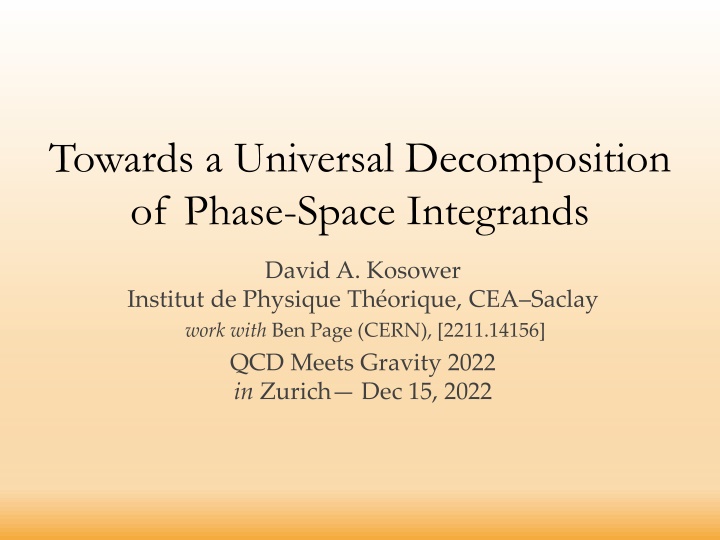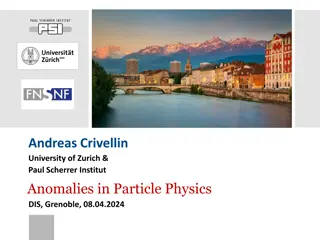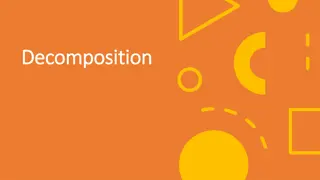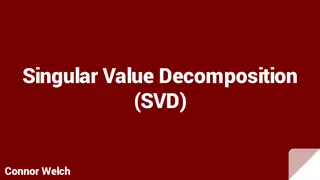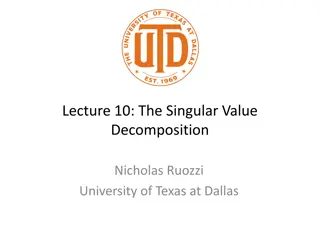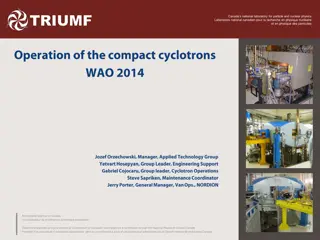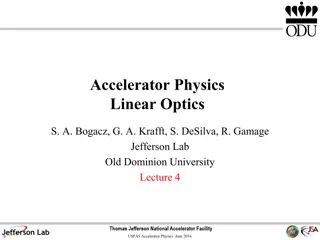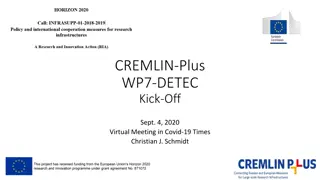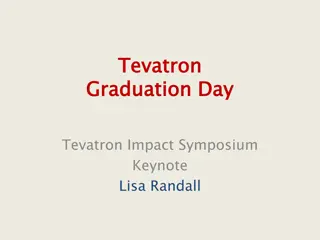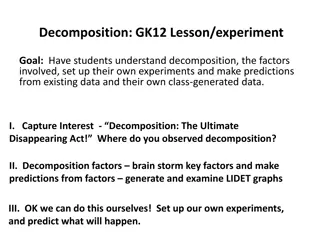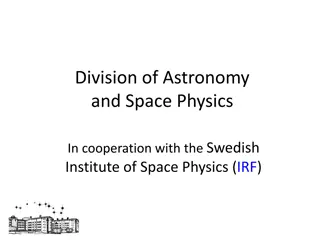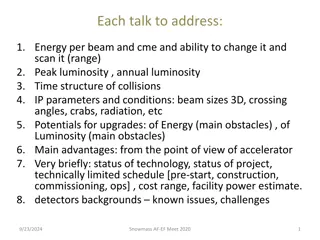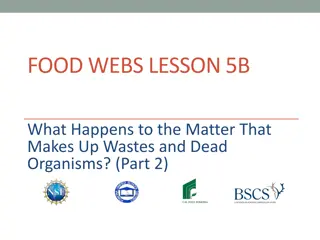Advancing Phase-Space Integrands Decomposition in Particle Physics
Towards a universal approach for disentangling complex phase-space integrands in particle collisions, researchers are exploring methods to tame jet hair, cancel divergences in observables, and develop frameworks for precise calculations at various perturbative orders. The vision includes mastering multi-emission and single-emission phase-space integrals through advanced decomposition techniques.
Download Presentation

Please find below an Image/Link to download the presentation.
The content on the website is provided AS IS for your information and personal use only. It may not be sold, licensed, or shared on other websites without obtaining consent from the author.If you encounter any issues during the download, it is possible that the publisher has removed the file from their server.
You are allowed to download the files provided on this website for personal or commercial use, subject to the condition that they are used lawfully. All files are the property of their respective owners.
The content on the website is provided AS IS for your information and personal use only. It may not be sold, licensed, or shared on other websites without obtaining consent from the author.
E N D
Presentation Transcript
Towards a Universal Decomposition of Phase-Space Integrands David A. Kosower Institut de Physique Th orique, CEA Saclay work with Ben Page (CERN), [2211.14156] QCD Meets Gravity 2022 in Zurich Dec 15, 2022
Taming Jets Hair Jet differential cross sections are the finest-grained observables at modern colliders LO each jet modeled by a lone parton NLO virtual: same; IR divergences in loop integrals real-emission, some jets modeled by pair, IR divergences in phase-space integrals NNLO double-virtual: lone parton, IR divs in loop integrals mixed: mixed divergences double-real: IR divergences in phase-space integrals Need to cancel divergences Ideally point-by-point in jet phase space
Current Approaches Cancel in physical observables (not point by point) Slicing virtual divergences known analytically separate singular regions (soft, collinear) integrate analytically integrate numerically in hard regions Giele & Glover; Giele, Glover, & DAK Subtraction singular behavior known analytically subtract it everywhere, resulting integral finite integrate singular functions analytically Catani & Seymour; Frixione, Kunszt, & Signer; Nagy & Soper; Bevilacqua, Czakon, Kubocz, & Worek NNLO generalizations of subtraction Gehrmann-De Ridder, Gehrmann, & Glover; Weinzierl; Del Duca, Duhr, Kardos, Somogyi, Sz r, Tr cs nyi, & Tulip nt; Czakon; Magnea, Maina, Pelliccioli, Signorile-Signorile, Torrielli, & Uccirati hybrid schemes Stewart, Tackmann, & Waalewijn; Catani & Grazzini Complicated and not yet fully general
Framework Virtual @ NLO: ? partons ? (proto)jets Real Emission @ NLO: ? + 1 partons ? (proto)jets Do phase-space integral exactly in ? = 4 2? Mixture of analytic and numerical Want to align phase spaces, expose analogy Reexpress partons in terms of protojets ??= ??( ?? ??= ??( ?? Factorize phase space (exact) ?+1) ?+1)
Vision of the Destination If you don't know where you're going, you'll end up someplace else. Yogi Berra Master-integral decomposition of multi-emission phase- space integrals Master-integral decomposition of single-emission phase- space integrals Decomposition of single-emission phase-space integrands: squares of tree amplitudes
A thousand-mile journey begins with a single step Paraphrase of Laozi (between 2300 2500 yrs ago) Decomposition of tree amplitudes with one emission Suitable mapping to isolate emission ~ theoretical jet algorithm Classification of amplitudes Computational algebraic geometry
Decomposition of One-Loop Integrands First: integrands with trivial numerators Integrand of hexagon External momenta strictly in ? = 4 Use Gram determinants
Scalar Hexagon Decomposition 2 Six denominators ??= ?1,? Write a Gram identity And put it over the denominator
New Lyrics to an Old Melody like the Lichtenstein National Anthem Look at singularities on both sides of the decomposition Both are singular when any ??vanishes What happens when all ??vanish simultaneously? Left-hand side (6 powers) appears more singular than right- hand side (5 powers) Consistent only if all ??cannot vanish simultaneously Obstruction must be dependent on external momenta in ? = 4
Inconsistency of Equations Need to show that simultaneous equations have no solution Use computational algebraic geometry Show the ideal generated by these polynomials is the unit ideal 1 : compute the Gr bner basis Cofactor matrix would give coefficients ????+ ?0? = 1
Inverse Antenna Mapping Antenna mapping: maps partons protojets Three recombining momenta yielding two massless protojets Want to map protojets partons, so that we can write original partons as f(protojets, real emission) Ultimately, functions of ?, ?,? ??,?? ?,??1,??2
Simple Example 1 Contribution ??3??34??345??1345??12345 ?1= ??3,?2= ??34,?3= ??345,?4= ??1345,?5= ??12345 Build a Gram It gives a similar decomposition
Harder Case No simple identity as for the simple example Need to add functions imposing mapping constraints ?1= ??4,?2= ??1,?3= ??45,?4= ??12,?5= ??123 ??vanish on physical configurations Too computationally difficult in standard variables
Better Variables & Finite Field Numerics Use finite-field momenta for ?1, ,?5,? ?,? ? Variables ? = {? ??,?? ?,??1,??2,?, ?}; ??3&c. expressed numerically Gram constraints solved explicitly Form of ?, ? expressed by two constraints ??,? ? Ideal ?1,?2,?3,?4,?5,??,? ? Compute Gr bnerBasis(?;?) using Singular {1} No common solutions as desired
Coefficient Simplification Coefficients from cofactor matrix ?????= 1 Not necessarily simplest Compute syzygies of ? Compute Gr bner basis of syzygies Reduce cofactors against this Gr bner basis Can make coefficients independent of ??, but not ?, ?
Triskelia a well-known triskelion Classify all possible contributions: focus on all possible arrangements of the three recombining partons Lines from each inwards will ultimately meet at a center Number and types of legs attached give different triskelia Twelve major classes, subclasses depending on masses
Survey Consider 1152 triskelia (after symmetries) All yield unit Gr bner basis In all cases, coefficients can be made independent of ?? Results independent of external masses
Numerators What about reduction of nontrivial numerators? In one-loop integrals, just ordinary partial fractioning In CAG, Analog for tree-level contributions
Summary First step towards decomposing phase-space integrals into master integrals Recast one-loop integral reduction into language of computational algebraic geometry Generalizes to allow partial-fractioning of any cubic contribution to a tree-level scattering amplitude Finite basis of master integrals
